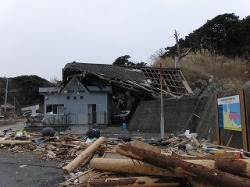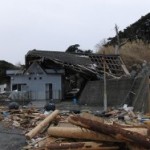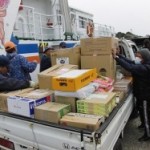If you take a ferry from Ishinomaki (Miyagi Prefecture) and sail for about two hours, you will reach a small island called Ajishima, home to about 500 people, most of whom are elderly. The tsunami hit the island before it had gathered full strength, but as the team from the AAR Japan found out, the devastation was severe nonetheless. A Japan Self-Defense Forces (SDF) helicopter had delivered some relief supplies, but not enough. On April 2, AAR Japan loaded supplies onto the ferry and delivered 4 tons of water, 24 boxes of batteries, fresh fruit, underwear, and other goods. (They are hoping to go back soon with much-needed rice.) The island only has power at certain times of the day, so the residents were extremely happy to receive the batteries. They were waiting for the SDF to return in order to start cleaning up the major damage, such as the wreckage of houses and cars that were scattered across the island and are too large for the islanders to move themselves. Because of Ajishima’s location, aid from the local and national government has been slow in coming, so the role of NGOs in helping these isolated communities is extremely important.
AMDA announced that by the end of April they will complete emergency and relief operations and shift to rehabilitative assistance. The main project in the next stage is to donate temporary clinic units to local doctors whose clinics were destroyed in the disaster. AMDA has already set up a mobile clinic trailer equipped with IV and EKG equipment. It is planning to construct two temporary clinics in Otsuchi (Iwate Prefecture) and Minamisanriku (Miyagi Prefecture). The cost per clinic will be approx. $120,000. AMDA also stressed that local doctors are in need of government loans to help them rebuild their operations as soon as possible.



